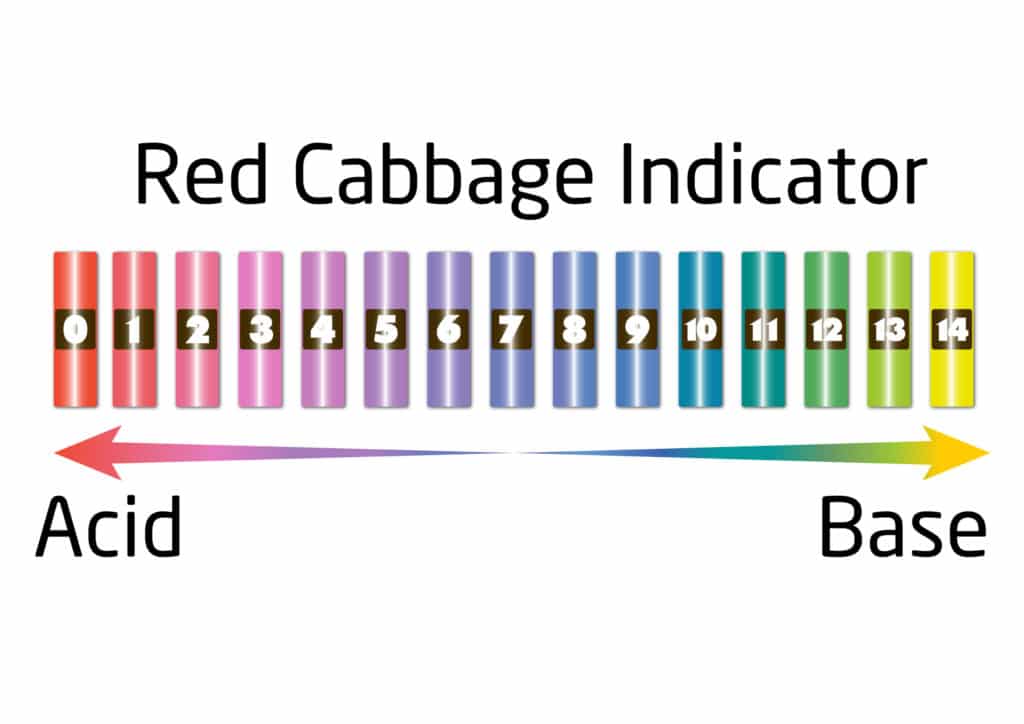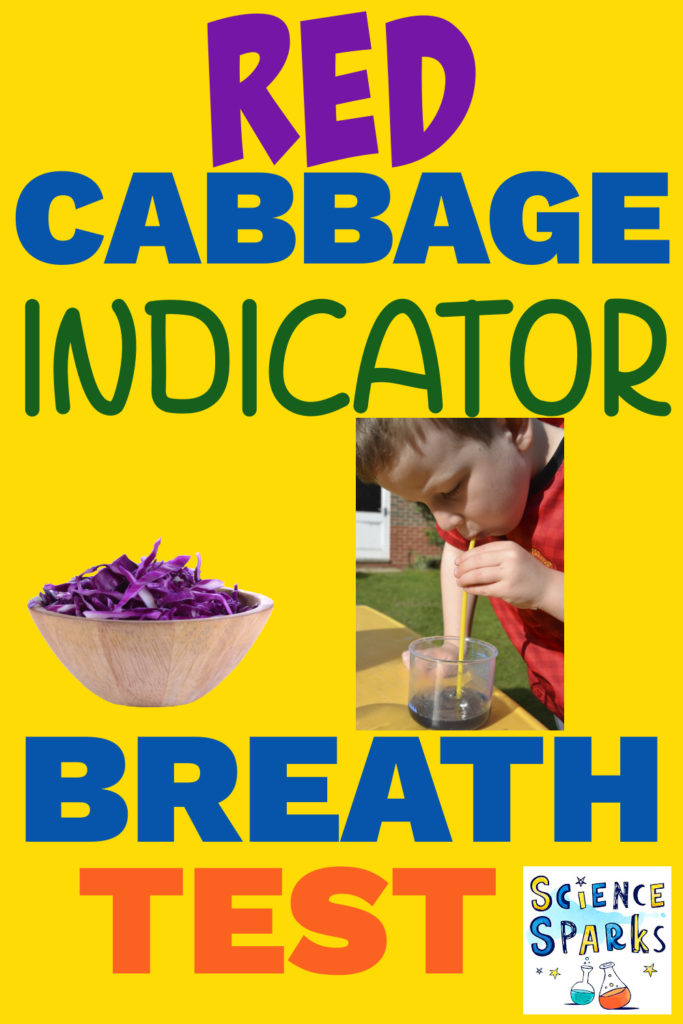Next time you boil up some red cabbage, make sure you save the liquid as it can be used for lots of easy science experiments.
This red cabbage breath test is a fun twist on the more traditional testing the pH of different substances, although why not do both?
Did you know you can even make your own pH testing paper using red cabbage indicator?
You’ll need
A handful of red cabbage
Pan
Stove or hob
Water
Straw
Transparent container
Sieve or colander
Instructions for a red cabbage indicator breath test
Boil a handful of chopped red cabbage in a pan of water. The water should turn purple after a few minutes.
Leave the pan to cool and drain the contents, saving the pink/purple liquid.
Pour the liquid into a transparent container.
Using the straw blow into the red cabbage indicator liquid. It should turn red, indicating that something in your breath is acidic!

Why does red cabbage indicator change colour when you breathe into it?
Red cabbage contains a natural pH indicator called flavin which is an anthocyanin. Flavin changes colour depending on the pH of the solution.
You can see from the red cabbage indicator pH scale below that it turns red in the presence of an acid and green/yellow in the presence of a base ( alkali ).
We breathe out carbon dioxide which is acidic, this is why the indicator turns red when you blow into it.

If you’ve still got some red cabbage indicator left, try testing different ingredients from around the kitchen to see if they are acidic or alkaline.
Who created the concept of the pH scale?
The concept of the pH scale was introduced by a Danish chemist called Soren Sorensen in 1909.
If you enjoyed this, you’ll love the rest of my kitchen chemistry science experiments!

Last Updated on October 16, 2023 by Emma Vanstone

Leave a Reply